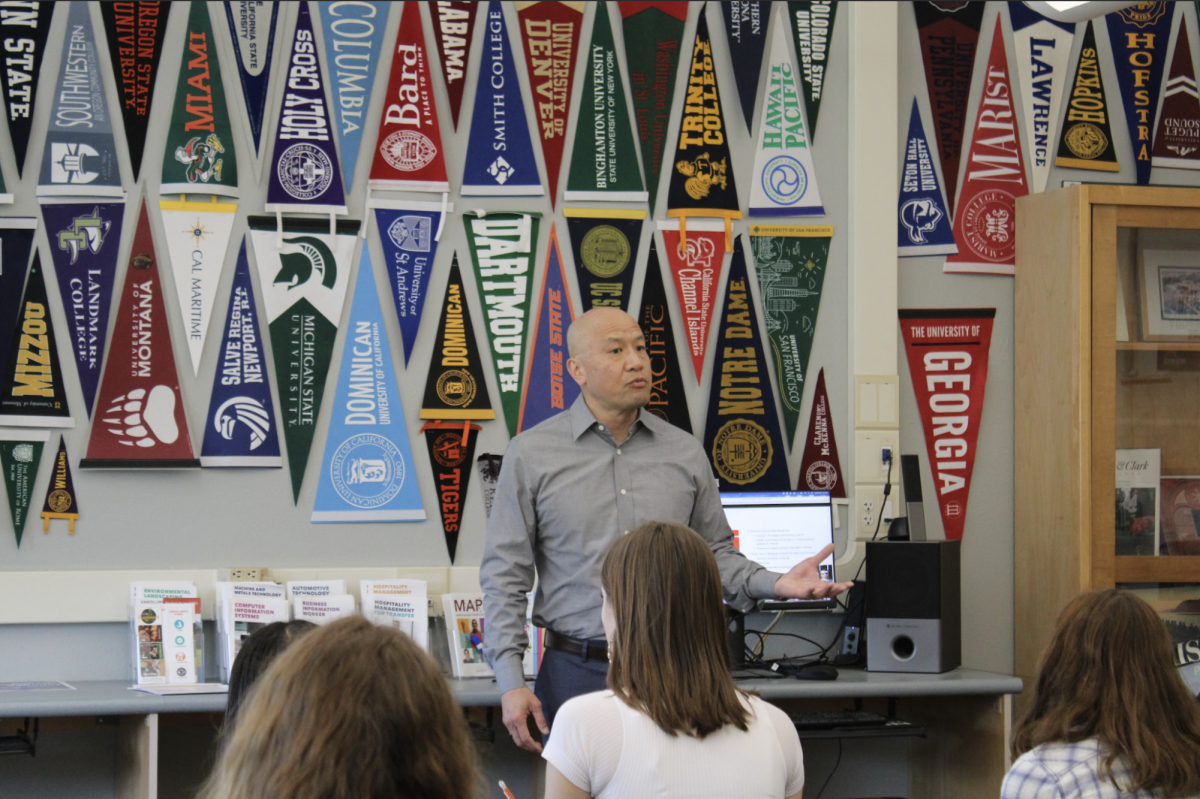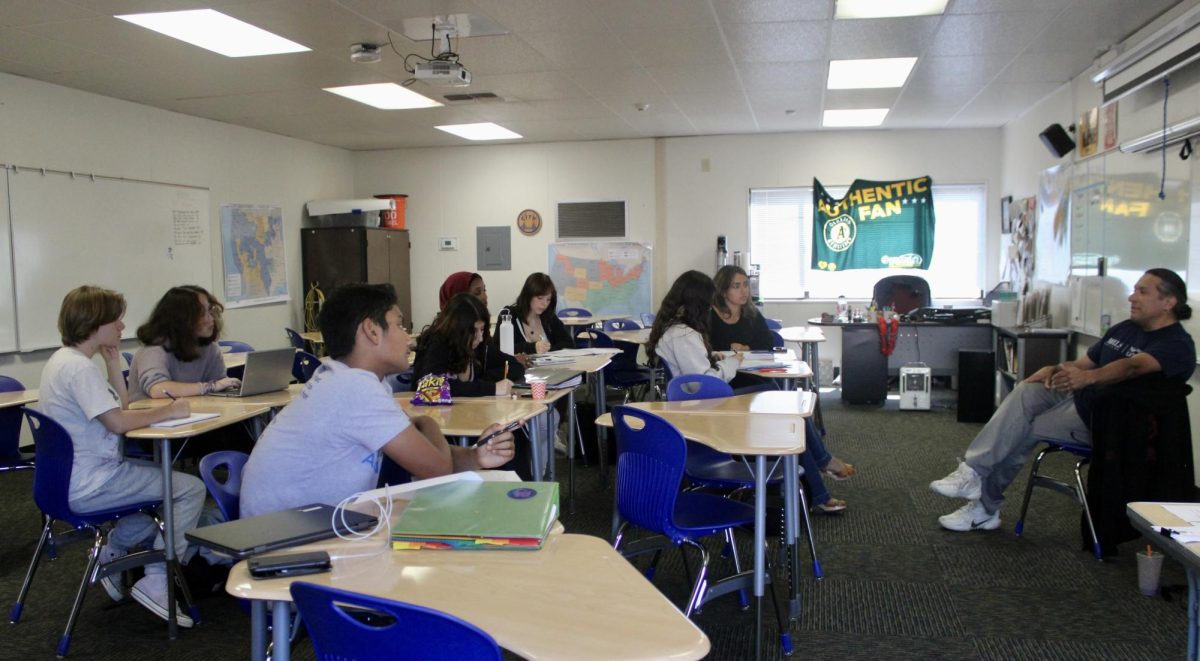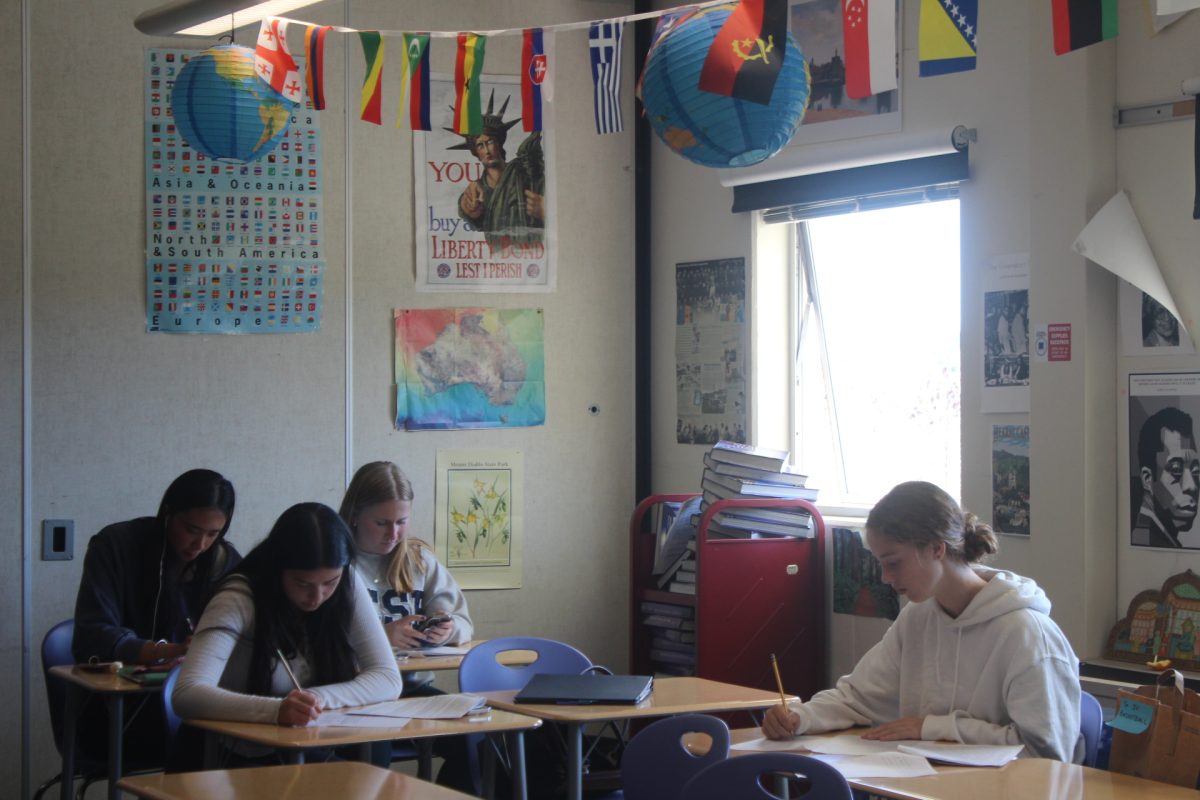A recent bill put forward to the California State Assembly by the California School Employees Association has become a concerning matter for drama departments across Marin, prompting action from both drama teachers and students.
Currently in the process of being revised, the bill, AB 1066, would prohibit short-term employees, who work 75 percent or less of the year, from returning the following school year as a non-classified employee.
Any short-term employees who return to work another year would have to be granted classified status, which confers statutory rights and benefits to employees, such as “a process for obtaining permanent status, due process rights, vacation days, holidays, and other benefits,” according to the bill analysis from the California Legislative Information website.
This potential restriction on hiring short-term employees sparked unsettlement regarding the ability of guest artists to be hired to work short term for drama departments at the TUHSD high schools, though the current draft of the bill contains language that would likely exempt guest artists.
On May 23, Redwood drama teacher Britt Block called out to the drama community via facebook to share anecdotes about the importance of guest artists. More than 75 students and alumni of the program responded within 48 hours of posting, according to Erik Berkowitz, head of the Redwood fine arts department.
Guest artists—professionals from the performing arts world—are frequently hired by the drama programs at each of the TUHSD high schools to teach specific acting and technical theater skills, as well as direct, choreograph, and provide musical direction for musicals. At Redwood, they are generally paid in the range of $15 to $45 per hour, according to Berkowitz, though their rates are up for negotiation and some artists receive a stipend instead.
“[Guest artists], most important, bring in their professional experience. They’re bringing real life experience,” Berkowitz said. “It’s advice, but most important, it’s role modeling.”
At Redwood specifically, anywhere from 25 to 30 artists are hired each year, and they continue to teach for days, weeks, or even months at a time, depending on their contracts and the nature of the project. Some have been teaching for decades, according to Berkowitz, while others are just out of college.
Currently, Redwood’s drama department gets their funding for guest artists through grants from the Redwood Foundation, and received a $90,000 grant from the foundation this year, which is a $10,000 increase from ten years ago when the foundation first funded the department. This increase in money allows the Redwood drama department to hire guest artists.
Without the foundation grants––or the ability to hire guest artists––Redwood’s drama program would not put on as many productions, Berkowitz said.
“It would lower the quality. The expertise we have would not be as full,” said Berkowitz. “Maybe we wouldn’t do a musical or we’d do something else and maybe it’s less than what the community wants.”
However, it is quite possible the bill would not hurt arts programs at all. The current draft of the bill exempts positions that are of “such a highly specialized or technical nature that the necessary expert knowledge, experience, and ability are not available through the school district,” meaning that the ability of schools to hire guest professionals would not be affected. The concern, therefore, lies in the uncertainty of how the final draft of the bill will unfold.
“Everyone was nervous that last minute conversations and deals could lead to changed language that would very negatively hurt our programs through making it almost impossible to hire outside people,” Berkowitz wrote in an email.
“We were concerned that near the end people may start haggling the language,” Berkowitz said.
Tam, similar to Redwood, brings in guest artists to teach about technical aspects of theater and provide specialized instruction.
“I can’t imagine what it would be like without these guest artists,” said Laine Gruver, a junior enrolled in Advanced Drama at Tam. “The permanent drama teachers are great and so talented, but when they’re teaching classes of 30-40 students, you don’t always get personal attention from them.”
Tam’s program, received a grant of $40,000 from the Tam High Foundation for the 2015-16 school year, a $10,000 decrease from this year’s grant, according to Ben Cleaveland, co-director and drama teacher at Tam’s Conservatory Theater Ensemble.
Each year, Tam’s drama department reapplies for “mini” and “major grants:” “mini grants” are less than $10,000 and fund special projects or workshops with guest artists, while “major grants” of more than $10,000 are used for trainings in design and other technical aspects of theater.
Gruver said she would not have continued to the Advanced Drama program after her sophomore year had it not been for the guest artists.
“With guest artists, when you split it up into groups of 10 or 12, the guest artist has a personal connection with each student,” she said. “They’re able to really focus on how you’re doing day to day, and they can see so many more minute improvements than the drama teachers can.”
With a program that’s 169 students smaller than Redwood’s, at 281 students, the Tam High Foundation supplied about $178 per drama student for the 2014-15 school year.
The $40,000 grant for the 2015-16 year is on the large side, considering grants from past years. However, the program has grown significantly in the 17 years since Cleaveland’s arrival to the program, from five sections of students to 14, yet its annual funding from the Tam High Foundation has continued to hover between $10,000 and $50,000 since 2000.
Drake’s theater program, on the other hand, receives much less from the Drake Fund, its foundation equivalent, and hires significantly fewer guest artists each year as a result. This year, they hired just one guest artist using $5,000 of their $8,000 grant.
An additional $9,100 from the Drake Fund went toward hiring a guest director and choreographer for the extra-curricular musical play.
The music program at Drake has a more vibrant guest artist program––they received a $27,000 from the Drake Fund this year.


















